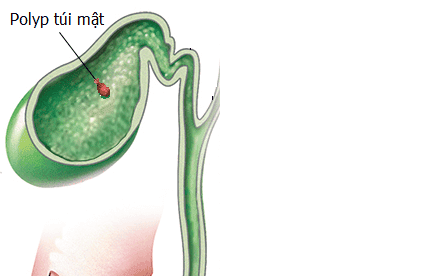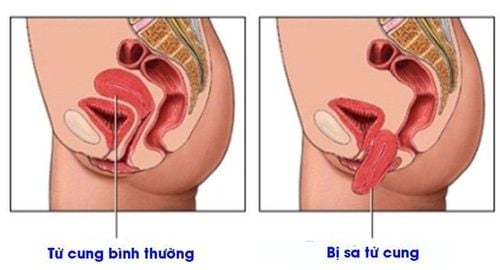This is an automatically translated article.
Millions of Vietnamese women are suffering from pain and guilt from genital prolapse. However, not everyone has enough information and knowledge about this disease. The following article will help you have the right understanding of Genital Prolapse and effective treatment and prevention methods.The article is professionally consulted by: Doctor Nguyen Chi Quang, Obstetrician and Gynecologist, Vinmec Central Park General Hospital
What is genital prolapse?
According to statistics, about 10 - 30% of women in Vietnam have genital prolapse, mainly in people between the ages of 40 and 60. Because of the disease in the private area, along with the fear of learning and lack of information, many women have a habit of ignoring and ignoring the disease, only when the disease is serious will they seek a doctor. Genital prolapse causes abnormalities. According to Doctor Nguyen Chi Quang, Department of Obstetrics and Gynecology, Central Park International General Hospital, the state of genital prolapse is caused by the reproductive system. The muscles and ligaments in the perineum are aging and stretched, the visceral organs in the abdomen press on the perineum, making it easier for the pelvic organs to fall down according to the natural openings of the perineum. Genital prolapse is common in women:Having multiple births, giving birth too early, not having a safe and proper delivery Those with a history of prolonged labor, difficult delivery; Pregnant women go to work too soon after giving birth Women who have to do hard labor, especially those who often have to work in standing position, carrying heavy burdens, have always high abdominal pressure on the perineum. A small number of women between the ages of 25 and 30, even though they have not given birth but are in poor health, are also likely to have genital prolapse. If in the past, the disease was common in women who gave birth many times, did not receive a safe and proper delivery, but now it is found in those who work or exercise vigorously too soon after giving birth. In the early stage, the patient There is a bulge in the vulva region, the bulge appears infrequently, only seen when squatting or when coughing to have a bowel movement. Increasingly, the vulva bulge is protruding more and more often. Until the condition is very severe, the prolapsed mass located outside the vulva can no longer push into the vagina.

Nhiều chị em đang "sống chung" với bệnh và âm thầm chịu đựng
Laparoscopic surgery to treat genital prolapse at Vinmec Central Park – Keep the joy of women
To treat genital prolapse, depending on the severity of the disease and the patient's subject, doctors will prescribe medical treatments (drugs, rehabilitation exercises, ...) or surgery. Medical treatment is usually applied to patients with grade I II genital prolapse, or with elderly patients, chronic diseases or those who are not eligible for surgery.However, medical treatment only slows the progression of the condition and does not improve significantly, with patients with stage III genital prolapse should perform early surgery so that the disease does not worsen and remove the difficulty in living. Doctor Chi Quang said that, in the past, to treat genital prolapse, a vaginal hysterectomy was often applied, sewing to restore the anterior and posterior vaginal walls; However, this method has the biggest disadvantage that it is easy to re-prolapse the snout of the vagina. Moreover, women who have lost their uterus cause psychological lack of confidence and guilt.
Now, with the advancement of medicine, along with regular updating of advanced treatment methods, at Vinmec Central Park International General Hospital, the following methods have been applied: Laparoscopic surgery to place pieces Uterine and bladder lifting composite graft fixed to the protruding snout . This method with the greatest advantage is that there is almost no recurrence, still preserves the uterus, and also solves the accompanying urinary incontinence symptoms.
Laparoscopic surgery to put a composite graft to lift the uterus and fix the bladder into the protruding muzzle is evaluated as the method with the most advantages today in the treatment of genital prolapse
Recently, at Vinmec, received the case of a 60-year-old woman who suffered from genital prolapse for 3 years. The uterine mass has prolapsed completely, pressing on the urethra, making it impossible for the patient to urinate naturally. Each time the patient urinates, the patient must use his hand to push the prolapsed mass back into the vagina. In addition, the protruding uterine cervix is constantly rubbing against the underwear causing chronic inflammation of the cervix. The patient was diagnosed with grade IV uterine prolapse - bladder prolapse, and underwent laparoscopic surgery to place the uterus-bladder lifting graft fixed to the protruding muzzle.
After 3 days of treatment, the patient recovered, and when he was discharged from the hospital, he was able to urinate easily on his own. When talking with the doctor, the patient wished that he would not hesitate to go to the doctor sooner and have surgery when the disease has not progressed so badly that the entire uterus has prolapsed.
Tips for effective disease prevention
When giving birth, it should be served by qualified medical staff. Avoid prolonged labor too long, have to stitch the perineum if torn; Avoid overwork associated with a sudden increase in intra-abdominal pressure. After giving birth, it is important to rest enough time for the muscles and ligaments in the perineum to contract again. No early employment before three months. If the job for a living is hard work, you should only return to work after 6 months of giving birth. It is necessary to avoid continuous heavy labor. Or have to change positions to rest, relax when working in a standing position and walking too much. Eat well, exercise in moderation, exercise regularly to increase the flexibility of muscles in general and the muscles of the perineum (exercise light exercises or consult a doctor) MORE INFORMATION
The miraculous recovery of the woman who had to quit her job because of uterine fibroids Can cervical cancer be cured? Total hysterectomy with the most advanced laparoscopic technique














